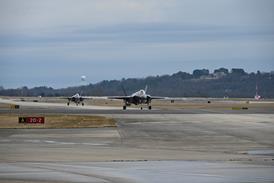Developer optimistic a viable SSBJ will be ready by 2011, with backing from partners
Supersonic business jet (SSBJ) developer Aerion is optimistic that its proposed eight- to 12-passenger design could claim the bulk of the projected SSBJ market because of an estimated six-year lead its simpler concept would have over the more complex quiet supersonic designs.
Aerion chief operating officer Michael Henderson says that as the aircraft would not operate supersonically over the continental USA it does not "require any rule changes relative to its operation. It's very do-able." Speaking at the Speednews regional and corporate conference last week, Henderson said the Aerion SSBJ could enter service as early as 2011 compared with projected entry-into-service targets of the quiet supersonic concepts that "are not until around 2017".
"We feel there are a lot of sales to be made in the meantime. We are in the middle of market research, but we estimate a requirement for between 250 and 350 aircraft." Supersonic Aerospace International, the main competitor to Aerion to emerge so far, sees demand for 300-400 aircraft, including government and special missions, but reducing to 250-300 if supersonic overland flight is not allowed.
Aerion's market analysis indicates that, flying overland at Mach 0.98, the SSBJ would be capable of going from Los Angeles to New York in 4h 19min, reducing to 3h 52min if the trip was performed at Mach 1.1 "at altitude". The company believes that the Aerion's straight-wing, supersonic natural laminar-flow wing design will also allow for a "boomless" cruise speed up to M1.1.
But even with a "boomless" capability the Aerion will still require a waiver from the Federal Aviation Administration to perform overland flights supersonically over the US. Operating internationally, the aircraft will use agreed supersonic corridors over sparsely populated areas of Australia, Canada and Russia.
Aerion is seeking partners to advance its plans beyond the Phase One evaluation. "One of the possibilities is we may need a European partner to make this viable - someone like Dassault," adds Henderson.
Dassault Falcon Jet director Brian Foley is downplaying the manufacturer's potential involvement in any on-going SSBJ or quiet supersonic aircraft project, other than the new European High Speed Aircraft study. "We're not comfortable yet with the current engine technology to make our design work and another long pole is the regulatory process. I'd say there will be nothing [in service] before maybe 12 years."
GUY NORRIS / PALM SPRINGS
Source: Flight International























